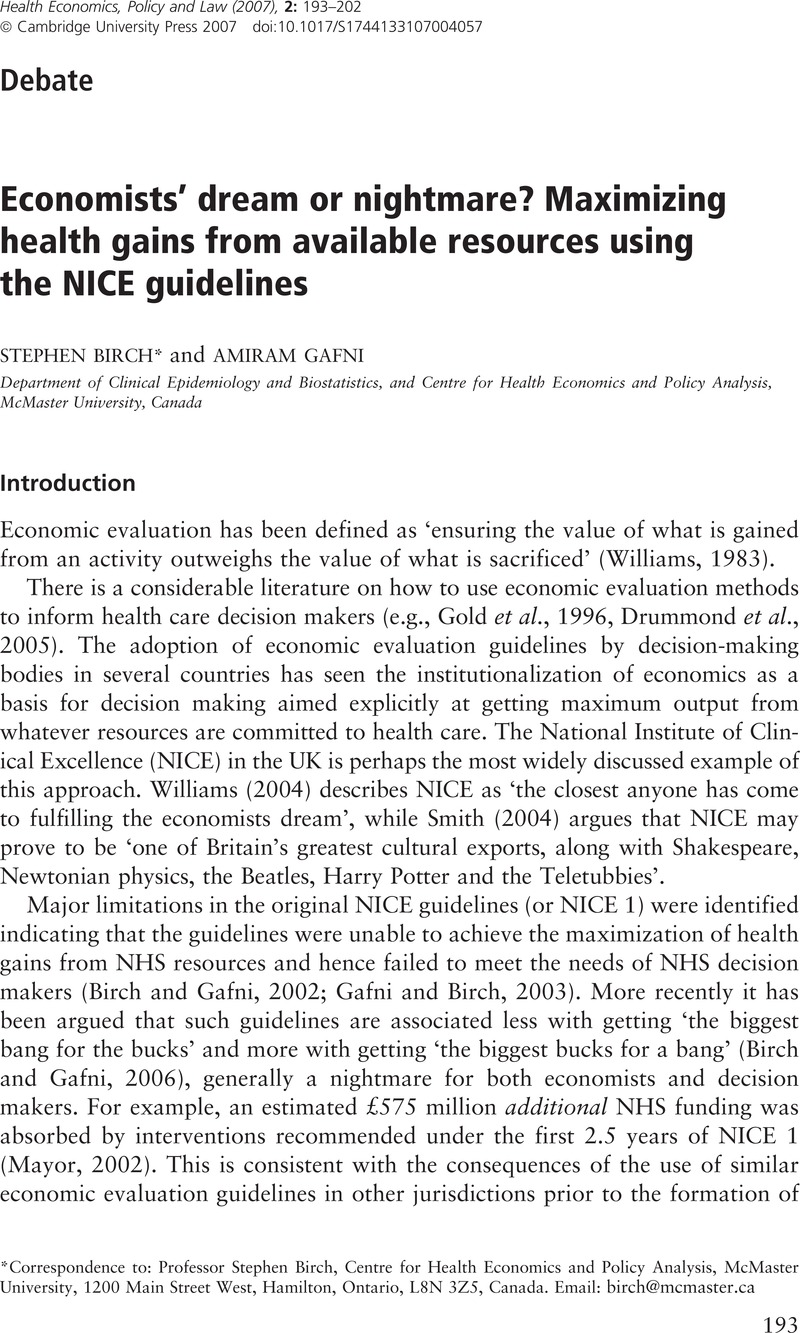Crossref Citations
This article has been cited by the following publications. This list is generated based on data provided by Crossref.
Elliott, Rachel A
2008.
Is QUM an Efficient Use of Healthcare Resources?.
Journal of Pharmacy Practice and Research,
Vol. 38,
Issue. 3,
p.
172.
PETTICREW, MARK
and
ROBERTS, HELEN
2008.
Systematic reviews – do they ‘work’ in informing decision-making around health inequalities?.
Health Economics, Policy and Law,
Vol. 3,
Issue. 2,
p.
197.
Oliver, Adam
2008.
Cost Containment and Efficiency in National Health Systems.
p.
41.
Pekarsky, Brita
2010.
Should Financial Incentives be Used to Differentially Reward ‘Me-Too’ and Innovative Drugs?.
PharmacoEconomics,
Vol. 28,
Issue. 1,
p.
1.
Towse, Adrian
Drummond, Michael
and
Sorenson, Corinna
2012.
The Oxford Handbook of the Economics of the Biopharmaceutical Industry.
p.
394.
Luteijn, J.M.
White, B.C.
Gunnlaugsdóttir, H.
Holm, F.
Kalogeras, N.
Leino, O.
Magnússon, S.H.
Odekerken, G.
Pohjola, M.V.
Tijhuis, M.J.
Tuomisto, J.T.
Ueland, Ø.
McCarron, P.A.
and
Verhagen, H.
2012.
State of the art in benefit–risk analysis: Medicines.
Food and Chemical Toxicology,
Vol. 50,
Issue. 1,
p.
26.
Listl, Stefan
and
Birch, Stephen
2013.
Reconsidering value for money in periodontal treatment.
Journal of Clinical Periodontology,
Vol. 40,
Issue. 4,
p.
345.
Meneu, Ricard
2015.
Health Technology Assessment and Health Policy Today: A Multifaceted View of their Unstable Crossroads.
p.
37.
Drummond, Michael
2015.
Health Technology Assessment and Health Policy Today: A Multifaceted View of their Unstable Crossroads.
p.
3.
Birch, Stephen
and
Gafni, Amiram
2015.
On the margins of health economics: a response to ‘resolving NICE’S nasty dilemma’.
Health Economics, Policy and Law,
Vol. 10,
Issue. 2,
p.
183.
Listl, Stefan
and
Faggion, Clovis Mariano
2016.
Valuing the Clinical Effectiveness of Therapeutics.
Journal of Evidence Based Dental Practice,
Vol. 16,
Issue. 2,
p.
86.
Listl, Stefan
and
Weyant, Robert
2019.
For careful consideration: the reporting of health economic evaluations in dentistry.
Journal of Public Health Dentistry,
Vol. 79,
Issue. 4,
p.
273.
Listl, Stefan
and
Wensing, Michel
2023.
Foundations of Health Services Research.
p.
187.



